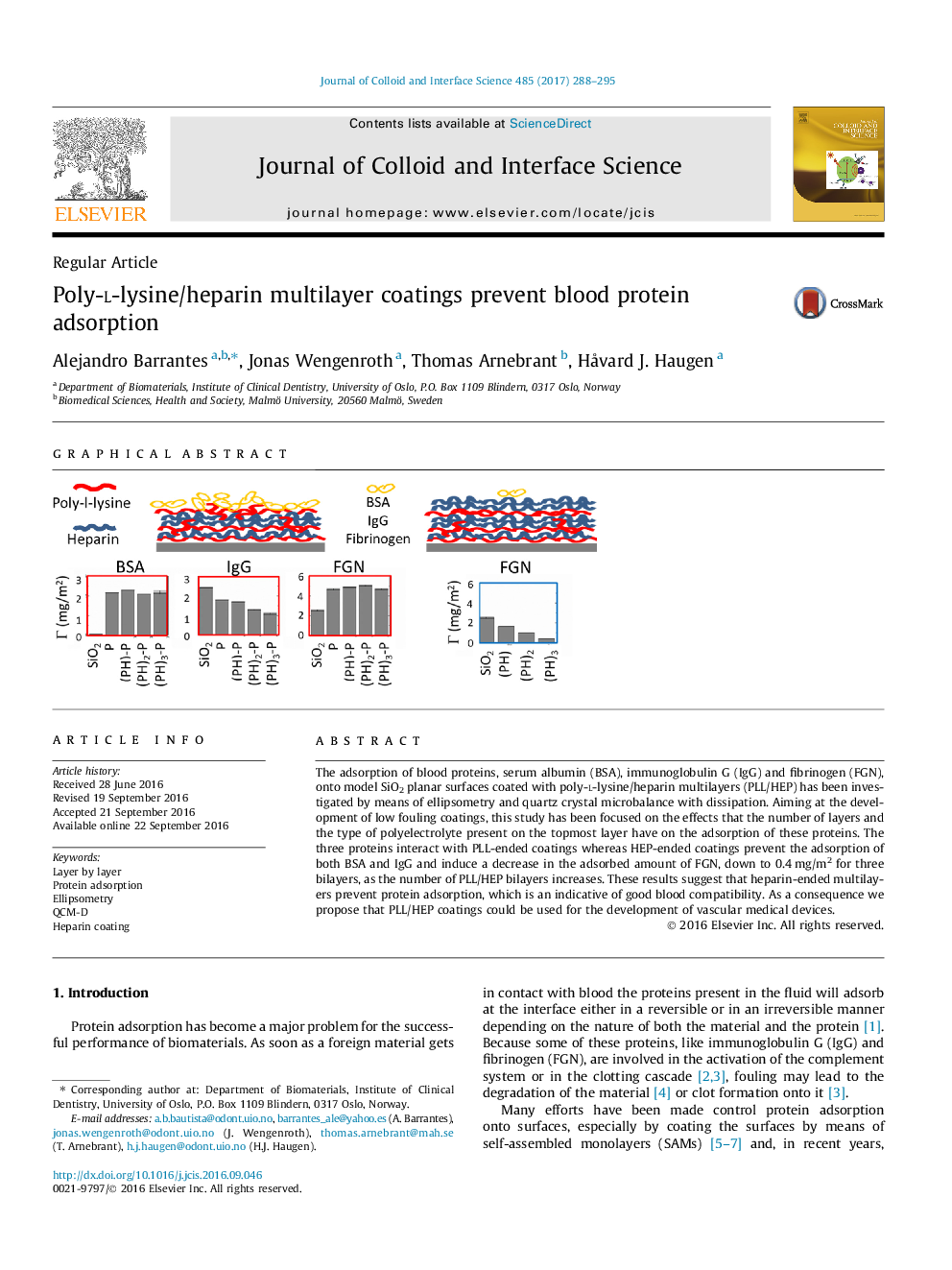| Article ID | Journal | Published Year | Pages | File Type |
|---|---|---|---|---|
| 4985389 | Journal of Colloid and Interface Science | 2017 | 8 Pages |
The adsorption of blood proteins, serum albumin (BSA), immunoglobulin G (IgG) and fibrinogen (FGN), onto model SiO2 planar surfaces coated with poly-l-lysine/heparin multilayers (PLL/HEP) has been investigated by means of ellipsometry and quartz crystal microbalance with dissipation. Aiming at the development of low fouling coatings, this study has been focused on the effects that the number of layers and the type of polyelectrolyte present on the topmost layer have on the adsorption of these proteins. The three proteins interact with PLL-ended coatings whereas HEP-ended coatings prevent the adsorption of both BSA and IgG and induce a decrease in the adsorbed amount of FGN, down to 0.4Â mg/m2 for three bilayers, as the number of PLL/HEP bilayers increases. These results suggest that heparin-ended multilayers prevent protein adsorption, which is an indicative of good blood compatibility. As a consequence we propose that PLL/HEP coatings could be used for the development of vascular medical devices.
Graphical abstractDownload high-res image (203KB)Download full-size image
